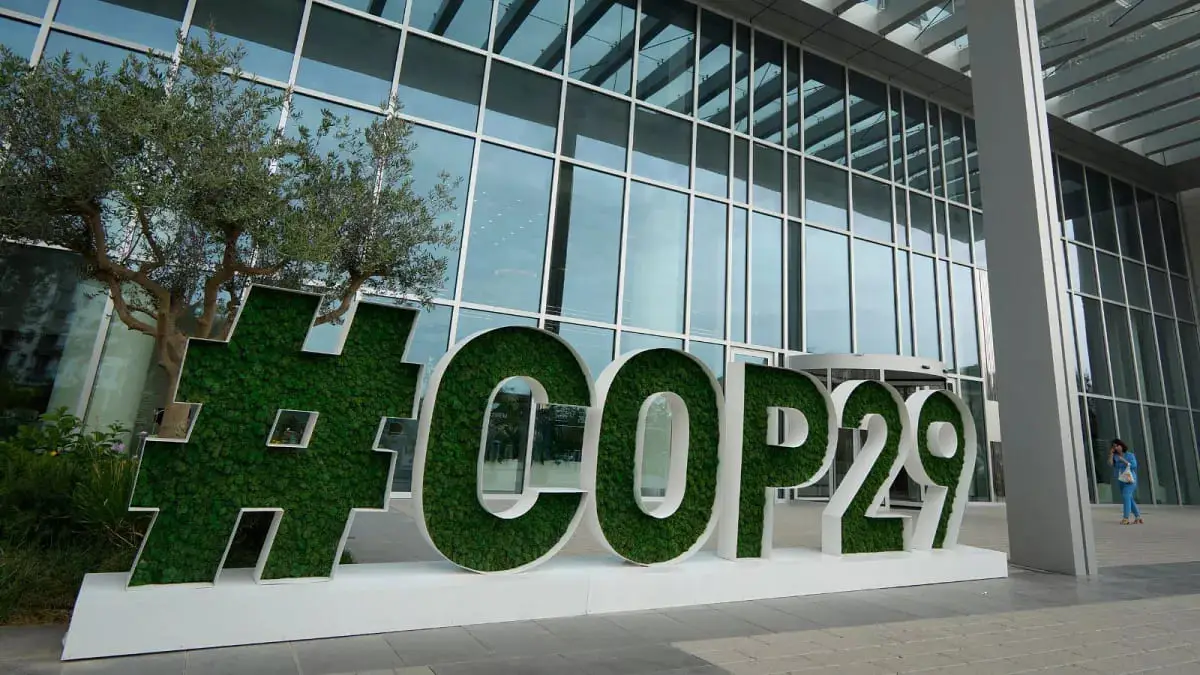By Chola Milambo, Ph.D., Permanent UN Representative (Zambia)
A gathering of 198 leaders, representing the contracting parties of almost all the world’s nations, would be significant whatever the context and the epoch.
At this particular juncture in humankind’s history, the Conference of the Parties (COP), convening in Baku, Azerbaijan between 11-22 November for the 29th year (COP29), is encumbered with an enormous burden of responsibility. As the decision-making body of the United Nations Framework Convention on Climate Change, COP29 needs to focus the entire world’s attention on Earth’s climate crisis, and adopt urgent measures to alter course.
Last year’s COP28 summit struck a historic accord. Nations reaffirmed the goal of capping, by the end of the century, global warming at 1.5°C compared to pre-industrial levels. They went further, agreeing to escalate their climate programs to transition away from fossil fuels, starting with tripling the capacity of renewable energies by 2030.
But not enough has changed, and a year later the situation facing COP29 has worsened. Climate scientists concur that global warming is happening much faster than previously predicted. The United Nations’ expert advisory body, the Intergovernmental Panel on Climate Change (IPCC), projects that the 1.5°C threshold will be exceeded by 2028 unless the world adopts far more decisive countermeasures. “With every increment of global warming, regional changes in mean climate and extremes become more widespread and pronounced,” it reports.
Many other science-based reports paint a similar picture. The Emissions Gap Report 2024 published last month by the United Nations Environment Programme (UNEP), for instance, notes that holistic industrial and production policies must drive a 7.5 percent annual reduction in greenhouse gas (GHG) emissions, effective immediately, to avoid breaching the 1.5°C threshold by 2030. The fact that GHG emissions are instead rising at an annual pace of 1.3 percent is further, compounding evidence that the status quo is actually accelerating us all towards an impending dystopia.
At a time when there are wars, unfolding human tragedies and deepening crises in all corners of the globe, it seems misdirected to use words such as “dystopia”, “precipice”, and “catastrophe” to describe climate impacts.
But they are apt to the describe Earth’s dire situation. Whether we are edging dangerously close to a tipping point is moot. We are experiencing and witnessing the impacts consistently, even continuously, in regions throughout the world. South-eastern America has just been devastated by not one, but two of the most intense hurricanes ever recorded. Hurricanes Helene and Milton wrought havoc; apart from the loss of hundreds of lives, the extreme storm surges and near-unprecedented rainfall and flash-flooding caused immense damage to property, infrastructure, industries and livelihoods.
Simultaneously, large parts of southern Africa are suffering from the effects of a severe drought. In respect of its exposure to the damaging consequences of climate change, sub-Saharan Africa is one of the world’s most vulnerable regions. Tens of millions of African people are disproportionately dependent on agriculture. But the ocean warming climate phenomenon has drastically shifted rainfall patterns, causing a prolonged dry spell which compromised the growing season earlier this year. This has extended into an ongoing hotter and drier period, one which is now the worst drought in a century. Five countries – Lesotho, Malawi, Namibia, Zambia and Zimbabwe – have declared a state of drought disaster. The UN’s World Food Programme reports that 27 million people in the region now face food insecurity, and 21 million children are suffering malnutrition.
The juxtaposition of deluge and drought is tragic in its manifestations and impacts in both North America and southern Africa. But structural inequities – let us call them what they are, injustices – are at play. The majority of developed nations – those that hold most of the levers of power, influence and finance – are in the Global North. Their industrialized economies have largely created the climate crisis; together, the world’s three giant economic blocs continue to generate close to 60 percent of global GHG emissions. However, it is the Global South – the term for the world’s developing countries – that experiences the severest impacts and can least afford the necessary resilience and mitigation measures.
This is why COP29’s agenda includes matters related to finance. Trillions of dollars will be required to assist developing countries’ mitigation and resilience programs, and to fund the complex mesh of climate solutions and green energy and industry transitions across the entire, interconnected world.
And interwoven within the climate emergency is a broader point, one which extends into how – indeed, whether – the world can build upon the arc of progress made since the Enlightenment, then the Industrial Revolution, and in our own Digital Age.
In 2015, UN member states formulated and agreed upon 17 Sustainable Development Goals (SDGs) to uplift the lives of all the world’s citizens, with a targeted timeframe of 2030 to achieve these goals. With the deadline just five years away, there is a worrying underachievement: only a minority of the 17 SDGs reflect either on-track or moderate progress, and for more than a third of the goals there has been stagnation or regression.
The SDGs are not a specific COP29 agenda issue. But the links to our climate emergency are clear. Without urgently needed solutions, climate impacts jeopardize our water supplies and food production, they compromise lives and livelihoods, and threaten natural systems and biodiversity. The climate crisis propels involuntary migration, impinges upon the productivity of people and the sustainability of cities, and forces a reprioritization of governments’ spending away from critical initiatives involving gender equality, education and the creation of employment opportunities. These interrelated problems are spiraling precisely because of our continuing underinvestment in climate adaptation and resilience measures, and in real, lasting solutions.
In its very latest, October 2024 report A Green and Just Planet, the G20 countries’ expert group estimates that $4.2 trillion is required, annually, to effectively combat climate change and achieve the SDGs by 2030.
The number seems unfathomable and unachievable. But governments can find these allocations. Global weapons spending is almost $2.5 trillion, fossil fuels subsidies total $7 trillion, and in 2000 leaders rapidly mobilized $11.7 trillion in emergency funds to combat and mitigate the Covid-19 pandemic.
A difficult truth for all of us as global citizens is that climate data and science, in its cold clarity, is often of little interest, or even unwelcome, to those who neither revel in its critical thinking nor embrace the realities – the facts – it unlocks.
COP29’s challenge lies in facing up to these hard facts. Unless the world’s leaders agree to implement urgent policy changes, and negotiate financing to systemize the trillions of dollars needed to fund holistic climate mitigation and transition initiatives, the 1.5°C limit will very soon be exceeded. This will push our planet to the very edge of habitability.
All 8.2 billion of us are imperilled.
If this isn’t reason enough, we should pause to think about all the people yet to be born. If humankind lasts as long as the typical mammalian species, 100 trillion people will follow us over the next 700,000 years before, possibly, we face extinction.
Our descendants would surely ask us to be careful with Mother Earth at this critical moment in time.
The author is co-facilitator of the Outcome Document of the Fourth International Conference on Financing for Development.



